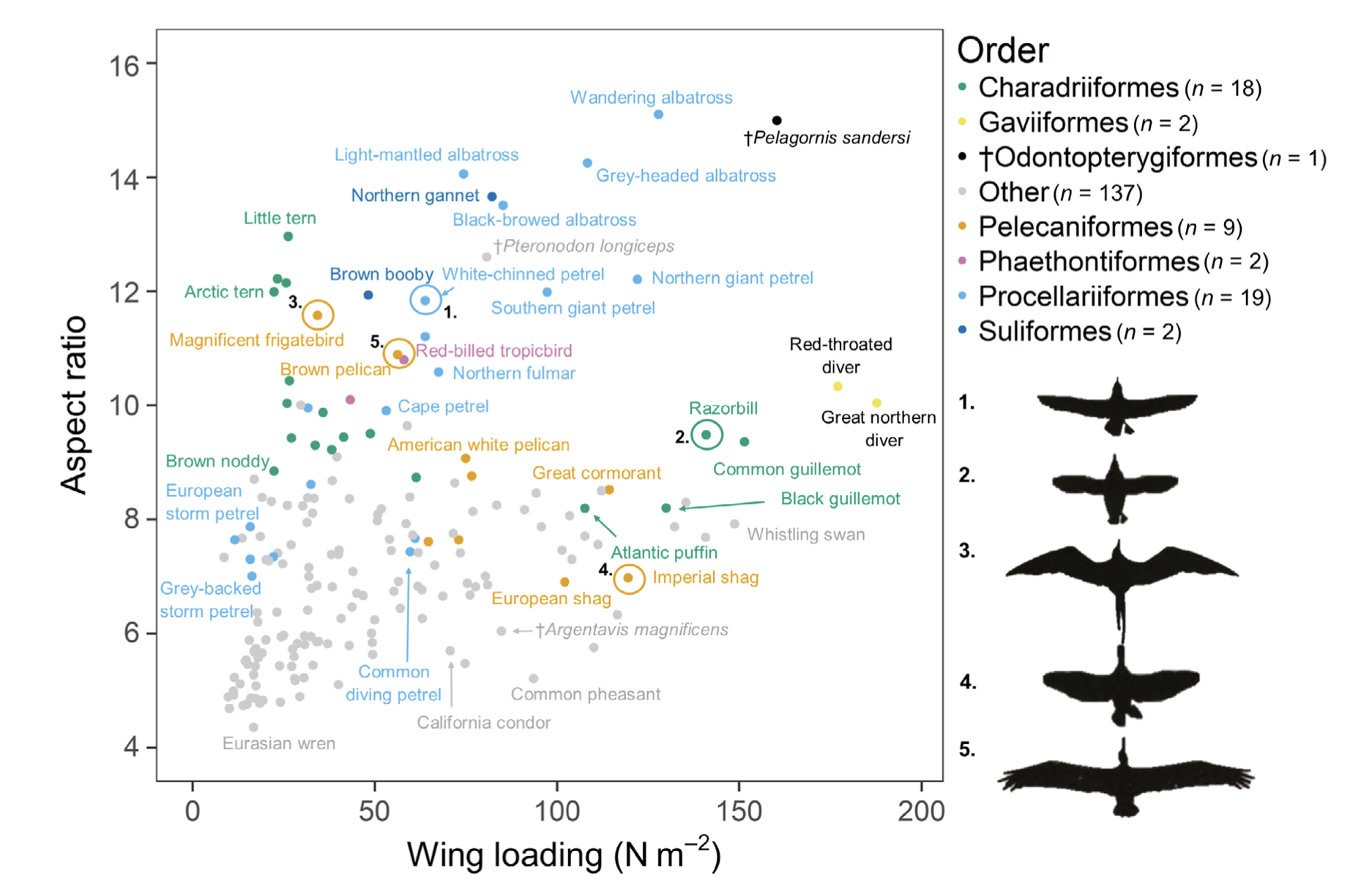 From the paper: Fig 2. The relationship between wing loading (N m−2) and aspect ratio (dimensionless) for flying birds
From the paper: Fig 2. The relationship between wing loading (N m−2) and aspect ratio (dimensionless) for flying birds
Lesley Thorne (School of Marine and Atmospheric Sciences, Stony Brook University, USA) and colleagues have published a review and synthesis on the impact of wind on seabirds in the journal Marine Ecology Progress Series.
The paper’s abstract follows: “For decades, studies have highlighted links between wind patterns and the behavior, ecology, distribution, energetics and life history of seabirds. However, only relatively recently have advancements in tracking technologies and improvements in the resolution of globally-available wind data allowed wind impacts on seabirds to be quantified across multiple spatiotemporal scales. Here, we review and synthesize current knowledge of the effects of wind on seabirds. We first describe global patterns of wind circulation and relevant atmospheric processes and discuss the relationship between seabird morphology, flight performance and behavior relative to wind. We then develop a conceptual model linking seabird movement strategies to wind, morphology, flight capabilities and central-place constraint. Finally, we examine how wind influences seabird populations via effects on flight efficiency and energetics, and wind impacts associated with climate variability and severe weather. We conclude by highlighting research priorities for advancing our understanding of the effects of wind on seabird ecology and behavior; these include assessing how and to what extent seabirds use ocean waves for efficient flight, understanding how seabirds sense and anticipate wind patterns, and examining how wind has shaped seabird evolution. Future research should also focus on assessing how wind modulates habitat accessibility, and how this knowledge could be incorporated into theory of seabird habitat use. Moreover, approaches that focus on mechanistic links between climate, wind and demography are needed to assess population-level effects, and will be imperative to understanding how seabirds may be impacted by climate-driven changes to wind patterns.“
Reference:
Thorne LH, Clay TA, Phillips RA, Silvers LG, Wakefield ED (2023) Effects of wind on the movement, behavior, energetics, and life history of seabirds. Mar Ecol Prog Ser 723:73-117. https://doi.org/10.3354/meps14417
11 December 2023

 Français
Français  English
English  Español
Español